Wagner cast iron cookware is regarded by many as some of the finest examples of 19th and 20th century cast iron. Much of the cast iron is over 100 years old and still usable today. These antique pans are sought-after by enthusiasts who prefer vintage cast iron to newer pans. But identifying and dating these old Wagner Ware Sidney -o-pans can be tricky.
So, with this article, I hope to help you and other proud owners identify and give an estimate of the age of your cookware. You can also learn the history of your cast iron, which the Wagner Manufacturing Company manufactured.
Table Of Contents
- Wagner cast iron. “Why is it so collectible?”
- Learn the history of the Wagner Manufacturing Company.
- Where you can buy Wagner cast iron.
- Considerations when purchasing Wagner cast iron cookware.
- You can identify and date antique Wagner cast iron using trademarks and logos.
- Final thoughts on collecting vintage Wagner Ware cast iron.
But first, here is a quick look at the Wagner Manufacturing Company.
Identify And Date Your Wagner Cast Iron Skillets Using Logos. Also, Learn The Fascinating History Of Wagner Manufacturing.
Background To Wagner Manufacturing Cast Iron.
Founders | Milton M. Wagner and Bernard P. Wagner |
Operational Dates | The foundry in Sidney operated from 1891-1959 |
Located | The Wagner Manufacturing foundry was in Sidney, Shelby County, Ohio. |
Product Line | Wagner was one of the largest American manufacturers of cast iron products in the 20th century. Their product line included skillets, kettles, bean pots, Dutch Ovens, roasters, fruit presses, scoops, broilers, Griddles, waffle irons, muffin pans, and cornbread pans. The company also had a range of aluminum cookware. |
Wagner Brands | Wagner labeled their cookware under the following names: Wagner, Wagner Ware Sidney -o-, Wagner Ware, National, Long Life, Magnalite, Wardway, and Ward’s Cast Iron. |
Signature Products | Wagner is best known for the Sidney -O- range of skillets and Dutch Ovens. |
Reason For Closure | The reason for the closure of the foundry came from two fronts. Firstly, the Wagner family sold their interests in the company in 1953 to the Randell Company. Secondly, the company struggled financially because of a drop in sales. The decline in sales was due to two World Wars, the Great Depression, the development of new cookware materials, and the increase of lower-priced imports from Asia |
Wagner After Buyout (Non-Collectible) | In 1957, the Randall Company purchased long-term competitor Griswold from McGraw Edison. The Randall Company sold the cast iron businesses to Textron Corp in 1959. General Housewares Corporation bought Textron in 1969. In 1994, the production of Wagner Ware ended. |
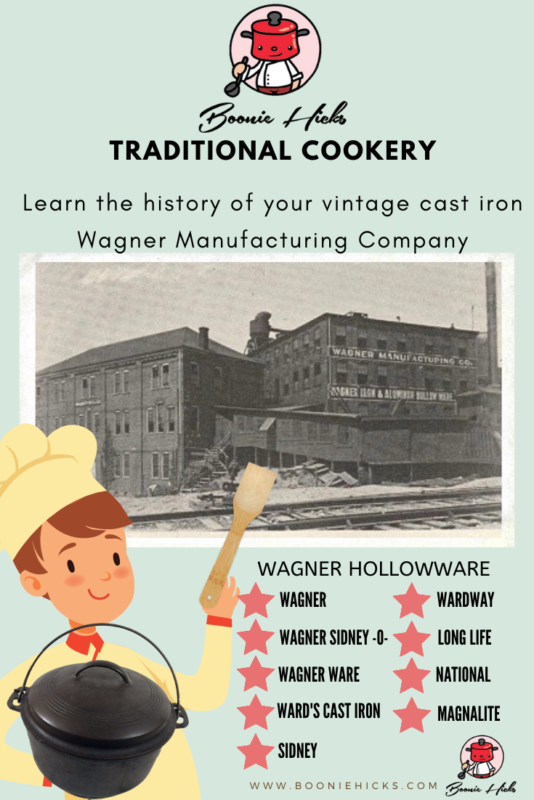
Why Is Wagner Cast Iron Collectible?
Super Smooth Cooking Surface.
Wagner cast iron is highly collectible. Like most antique cast iron, Wagner manufactured high-quality cookware for their entire range of cast iron products.
Unlike Wapak cast iron ironware, it often has characteristic casting flaws. Wagner cast iron tends to have a few casting flaws, resulting in very smooth cookware on both the interior and exterior of the cookware.
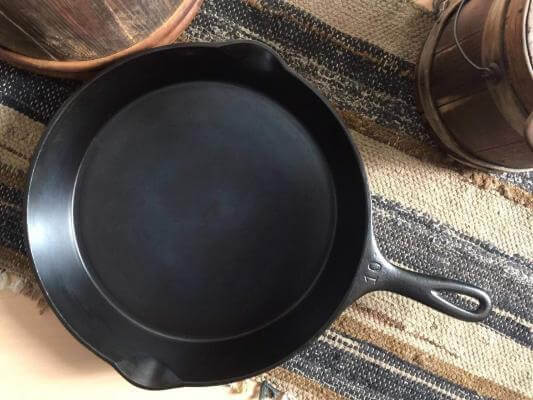
Focus On Quality
Imagine that workers would have worked on individual pieces of ironware. It was machined to smooth the interior and exterior of each pan. You can only see this level of detail in high-end cast iron cookware such as Le Creuset and Staub.
Today, Le Creuset and Staub benefit from combining traditional and modern manufacturing methods. However, the workers at Wagner could make cast iron cookware without casting flaws or bubbles. Must have taken great skill and attention to detail.
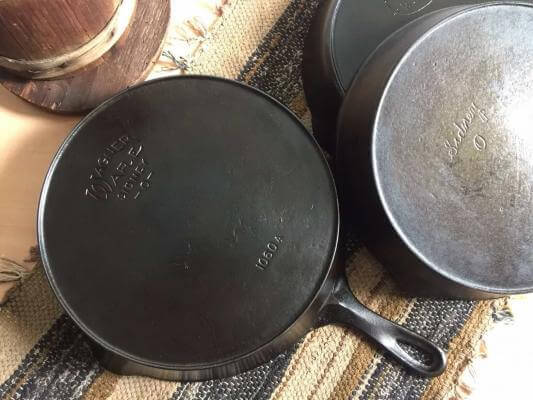
Wagner Made A Wide Range Of Cast Iron Cookware.
You can’t go wrong with an old Wagner cast iron skillet. It will serve you well for years, and they’re great fun. However, you may want to consider a Wagner Dutch oven. They are super smooth, and just like the skillets, they are reasonably priced. You can also buy cast iron muffin pans, which can be pretty cheap. But watch out for shipping costs that can increase the overall price drastically. Some of Wagner cast-iron cookware range includes:
- Dutch ovens
- Griddles
- Gem pans
- Waffle irons
- Skillets
You can even collect Wagner cast iron cornbread pans that look like corn cobs. Wagner Manufacturing also produced aluminum cookware, which must have seemed revolutionary.
Collect Your Favorite Logo.
If you want a vintage skillet, then Wagner skillets are a great choice. You can choose from sixteen different logos and trademarks or markings. I like pans with heat rings, while others may prefer a pan with a smooth base.
I think this wide selection makes Wagner cookware more collectible than other manufacturers, such as Vollrath and Martin Stove and Range, which manufacture a limited range of products.
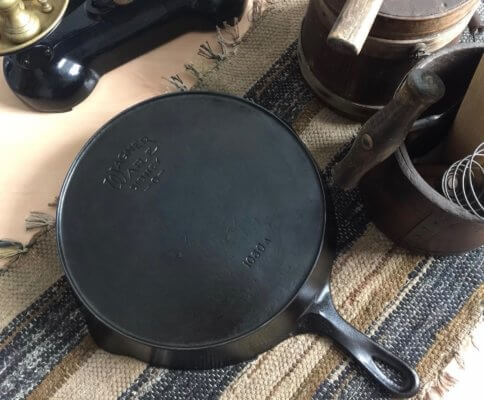
Wagner Manufacturing Company Focused On Quality Over Quantity.
Quality was a focus from the very start for Wagner Manufacturing Company. They even advertised this selling point to consumers. Old advertisements read;
We do not strive to manufacture hollowware as cheaply as possible but as well as it can be made. We cannot afford to put on the market ware that will not sustain our reputation. The name Wagner is on the bottom of each piece of ware.
Wagner Manufacturing Company History
Founders And Foundry
Who Founded Wagner Manufacturing? | Wagner Manufacturing Company was founded in 1891 by Milton M. and Bernard P. Wagner. However, two more Wagner brothers, Louis and William Wagner, joined the company in the following years. Another key player in the foundation of the company was R. Bingham. Bingham previously worked at Marion Stove Company and the Sidney Manufacturing Company. |
Where Was Wagner Cast Iron And Wagner Ware Made? | The company had its ironworks in Sidney, Shelby County, Ohio. Early cookware from Wagner Manufacturing had a simple Wagner marking on the back of the ironware. Wagner included Sidney O. in their cookware around 1895. The term Wagner Ware first appeared in the logo in the 1920s. |
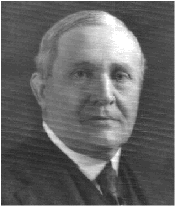
The Wagner Product Line Added Nickel Plating, Aluminum, And Magnalite.
Nickel-Plated Cast Iron | To complement their cast iron range, Wagner added a nickel-plated range. Unlike cast iron and copper pots, nickel plating does not react to acidic foods such as tomatoes, which can taint food. It’s easy to look past the development of nickel-plating. But, in the 19th century, bonding two metals together would have required much metal casting expertise. |
Aluminum Cookware | Along with nickel-plated cast iron, the Wagner brothers in 1894 manufactured a line of aluminum cookware, and Wagner Manufacturing was one of the first companies to do so. |
| Aluminum Cookware Exported To Europe | By 1913, Wagner cast iron and aluminum products were selling in Europe. |
| Magnalite | In the 1930s, Wagner manufactured a cookware line with a patented aluminum alloy called Magnalite. |
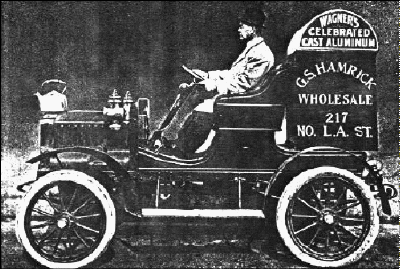
Wagner Manufacturing Buys Their Sidney Competition.
| Wagner Bought Sidney Hollowware Company. | In 1897, Wagner bought the Sidney-based competitor Sidney Hollow Ware Co. from the founder and owner Phillip Smith. Sidney Hollow Ware made high-quality cast iron cookware that was extremely light and smooth. Sidney Hollow Ware Co. was also an early adopter of nickel-plating cast iron. |
Why Did Wagner Buy Sidney Hollow Ware Company? | It was a brilliant idea to buy the Sidney Hollow Ware Company. After all, Wagner Manufacturing and Sidney competed in the same city and made comparable products. However, it was common knowledge that Smith made a tidy profit from his original investment in the foundry. To run the Sidney Foundry, William H. Wagner joined the family business to oversee the operation. |
Wagner Sold Sidney Hollow Ware Back To Phillip Smith. | In 1903, Wagner Manufacturing sold the Sidney Hollow Ware Company to the founder, Phillip Smith. Sadly, Phillip Smith did not reopen the foundry due to health reasons. |
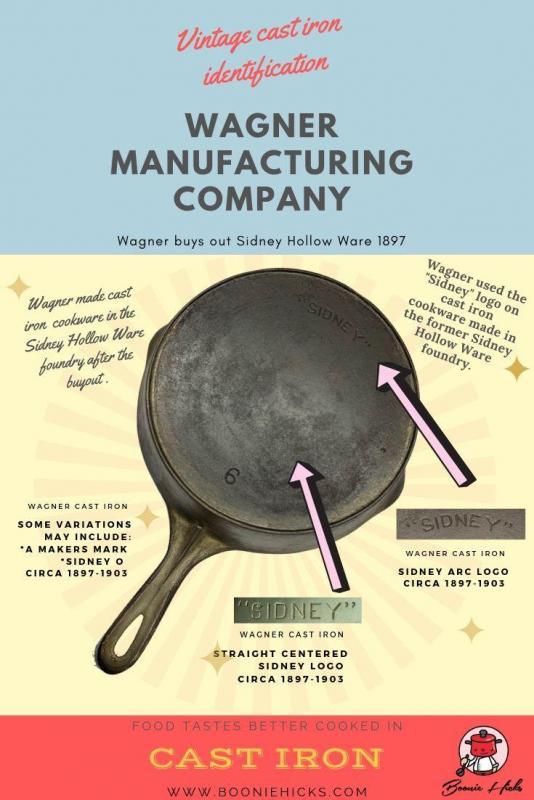
Wagner Introduced A New Product Line To Stop A Decline In Sales.
| The Great Depression (Magnalite) | I have to take my hats off to Wagner because they introduced a new product line called Magnalite in one of the deepest recessions the world has ever seen. Wagner Manufacturing was steadfast in making only quality products. For this reason, the cookware is collected and highly usable. |
| The Sales Decline | Wagner introduced Magnalite to stop falling sales at Wagner Manufacturing; it was not due to their product range. Magnalite was hugely popular, but it could not offset the effect of the worldwide recession. From 1929-1941, the US was in the grips of what we now call the Great Depression. Therefore, it was not only Wagner. However, many foundries struggled financially to survive. Many didn’t. |
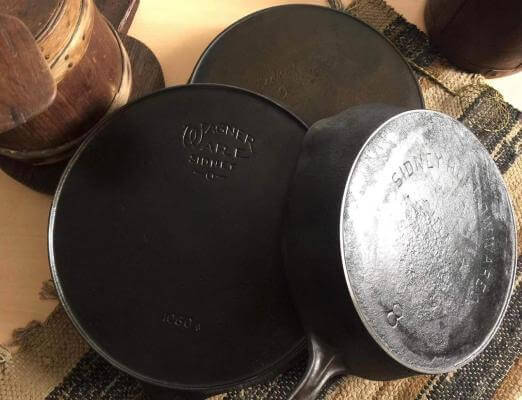
The Family Sells Their Interest In The Foundry.
Wagner Family Sells The Company To Randall Corp. | Wagner Manufacturing Co. lasted longer than many foundries. However, in 1952, Wagner was sold to the Randall Company. Unbelievably, the Randall Company was a car parts manufacturer. |
Textron Buys Randall | In 1959, another business called Tetron bought Wagner. Textron also purchases Griswold Manufacturing Company. At this date, cast iron enthusiasts consider this the end of Wagner Ware production. Wagner cast iron pans made after this date are considered not collectible. |
General House Wares | General Housewares Corporation in 1969 bought the rights of Griswold and Wagner. |
Is Wagner Ware Still Made? | With the world rediscovering cast iron cookware, will we see Wagner Ware skillets manufactured again? General Houses Ware stopped the manufacture of Wagner Ware in 1994. However, there is a glimmer of hope for Wagner Ware. In 2014, American Culinary bought both the Wagner and Griswold trademarks. So, fingers crossed, cast-iron fans may one day decide to manufacture Wagner cast iron again. |
Where Can You Get Your Hands On Some Wagner Ware?
- Grandparents (best deal and great to keep your heritage in the family).
- Antique stores (check online to compare the store price).
- Garage sales (rescue those poor skillets from the tip).
- Flea markets (search the markets for hidden gems).
- Online (largest selection available; however, asking prices can vary greatly.
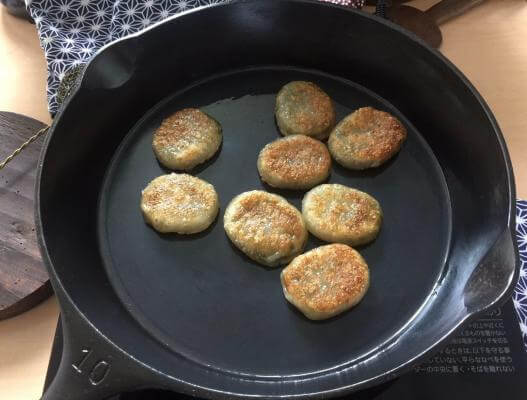
Buying Considerations Before You Buy Antique Wagner Ware
There Is Plenty Of Wagner Cast Iron Around, So Take Your Time.
There is no shortage of Wagner cast iron. Wagner had a large percentage of the cookware market back in its heyday. And plenty of fantastic Wagner skillets and Dutch ovens are in excellent condition.
What Size Skillet Or Dutch Oven Suits Your Needs?
The first thing you may want to think about is the size you need. There are often plenty of #8 skillets around. This size seems to be the most common for Wagner skillets and other vintage cast iron manufacturers, such as Favorite Piqua.
Inspect Carefully Since A Lot Of Wagner Ware Is Nickel-Plated.
Check the cookware carefully. The Wagner Manufacturing Company was an early adopter of nickel plating. However, most of Wagner cookware is unplated iron. Heavy seasoning may hide nickel plating. Nickel-plated can wear off or be patchy in places. Take a close look before purchasing.
Would You Like A Wagner Ware Skillet With A Smooth Bottom Or Heat Ring?
Do you want a pan with a smooth bottom or one with a heat ring? The older Wagner Ware skillets will have a heat ring, while the later-made pans have a smooth, flat base. It is a personal preference. I tend to like the older skillets with heat rings. They have more character, but the smooth-bottom Wagner cookware tends to be a little cheaper. And they are great cooking pans, too.
Does The Cookware Sit Flat?
As with all antique cast iron, asking the seller if the pan sits flat could be a good idea. A lever base is practical if cooking on a flat surface such as induction or glass.
Learn To Date And Identify Your Wagner Cast Iron Using Logos And Markings.
Although I’ve researched carefully, please only use the dates as an approximation.
Wagner cast iron cookware, to my knowledge, has sixteen known logos, brands, or markings. These include:
Straight Wagner Logo 1890s-1915
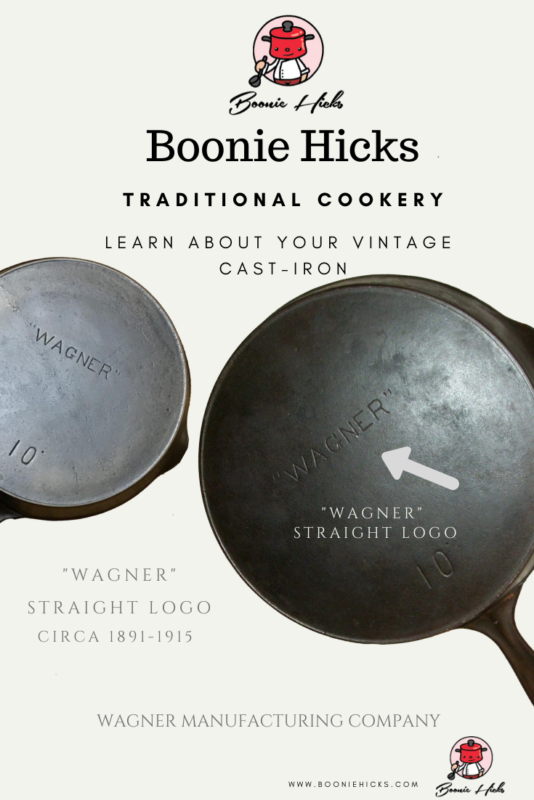
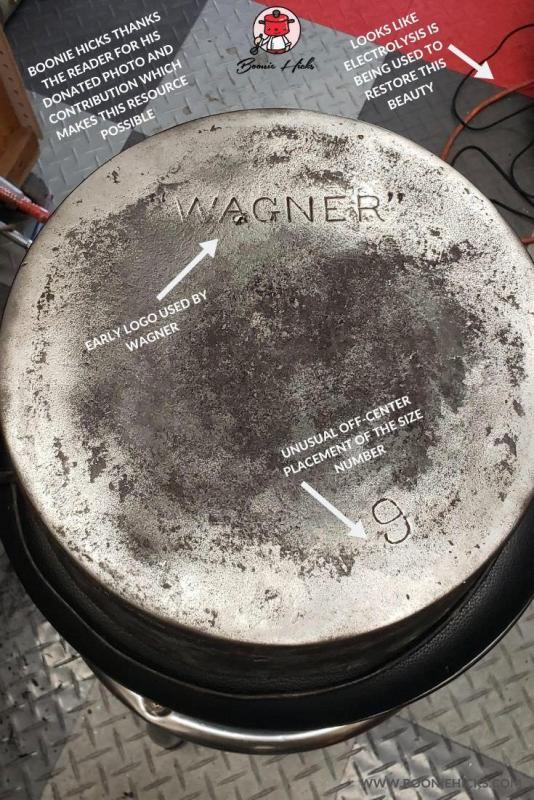
Wagner Arc Logo 1891-1910
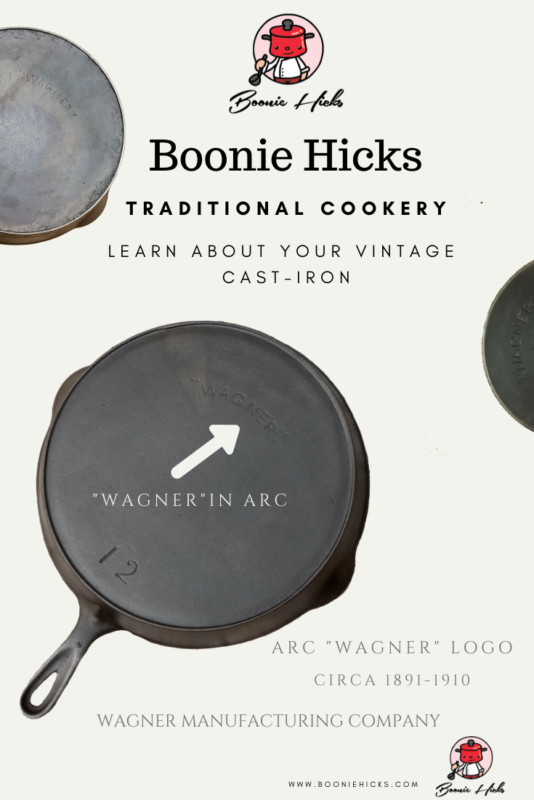

Double Arc Wagner Sidney O 1895-1915
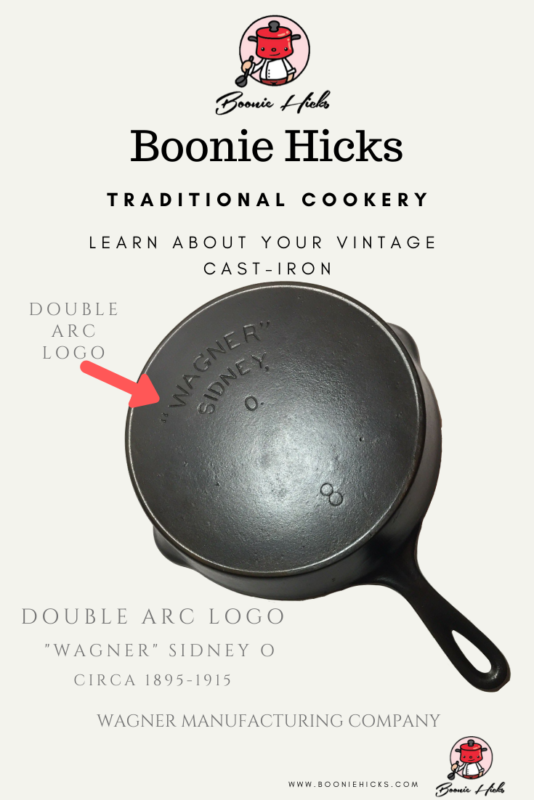
Sidney Arc logo Circa 1897-1903.
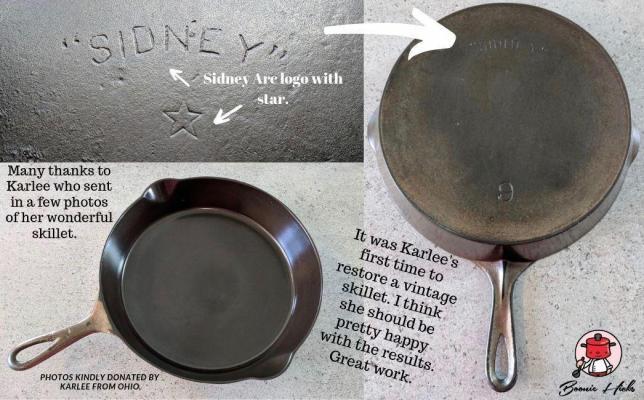
Straight Sidney Logo Circa 1897-1903.
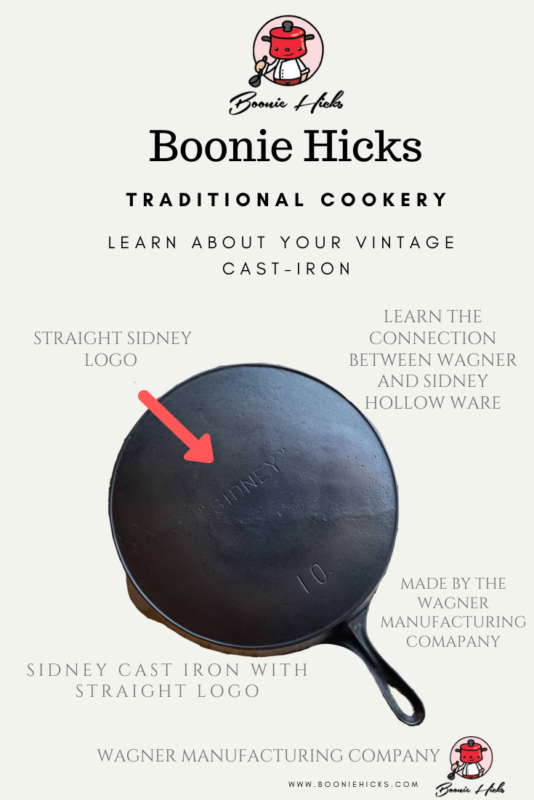
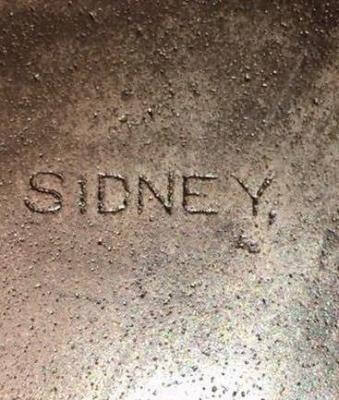
Straight Wagner Sidney O. (Centered.) 1910-1915
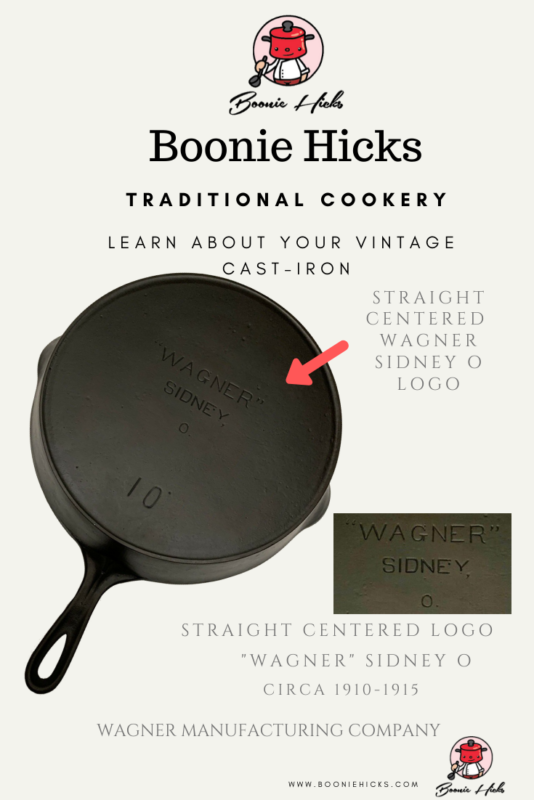
Wagner Sidney O. Wagner Slightly Arced While The Sidney Lettering Is Straight. Circa 1915-1920s
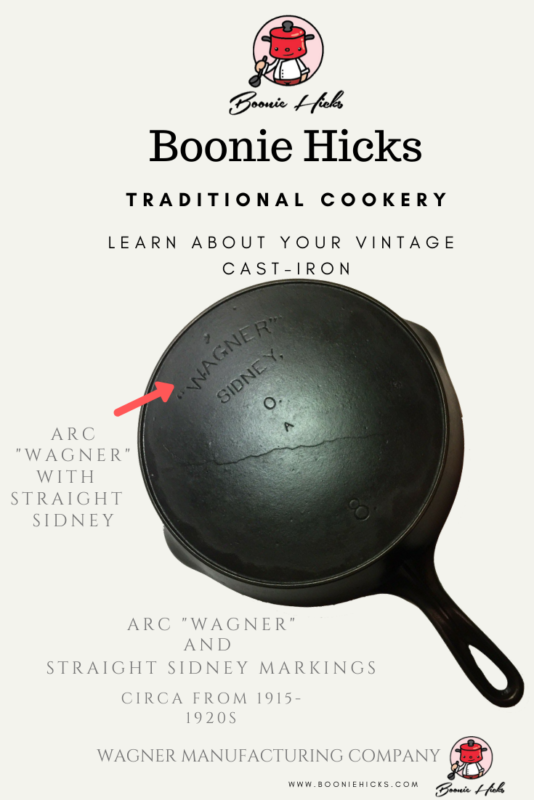
First Wagner Ware Sidney O. With Arc Wagner And Straight Ware And Sidney. Circa 1920s.
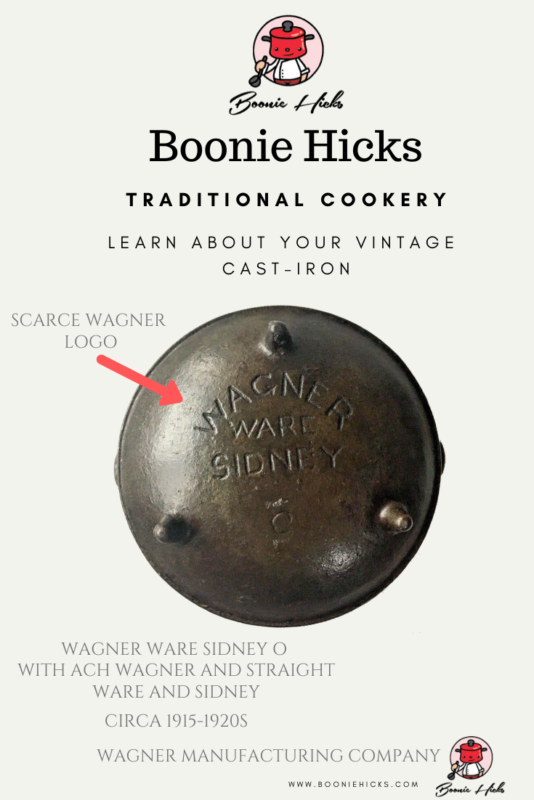
Stylized Wagner Ware Sidney O. for regular skillets. Circa 1920-1924 with heat ring and single-digit size number. 1924-1935 with a heat ring and a four-digit pattern number. Around 1935-1959, for skillets with no heat ring.
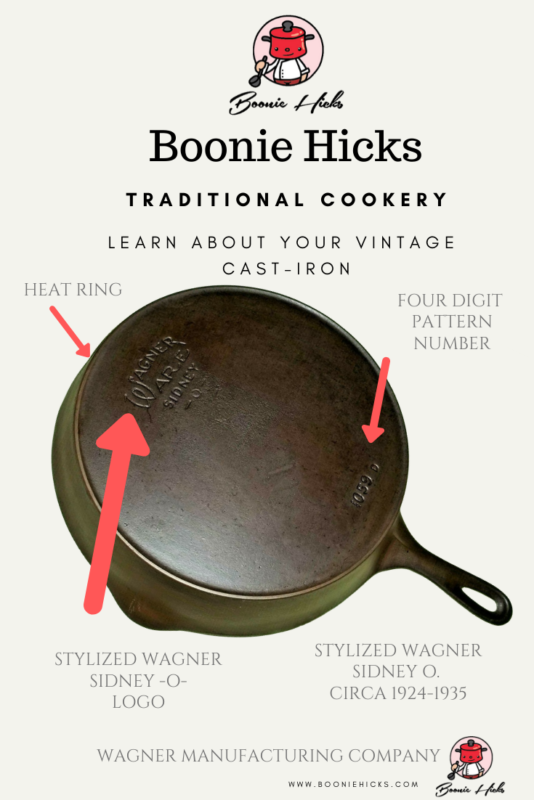
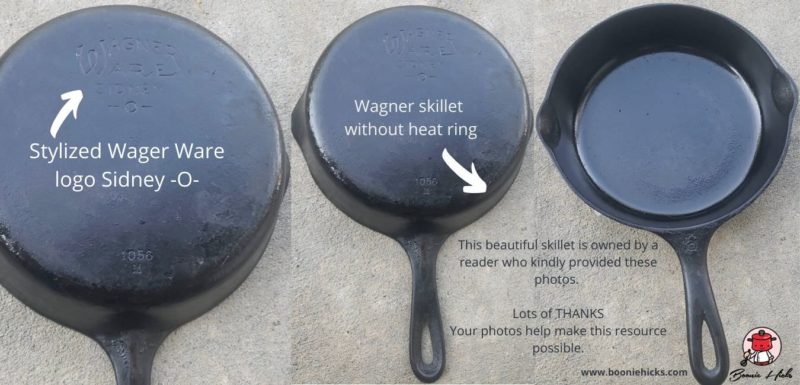
Centralized Stylized Wagner Sidney O. 1924-1935 With Heat Ring.
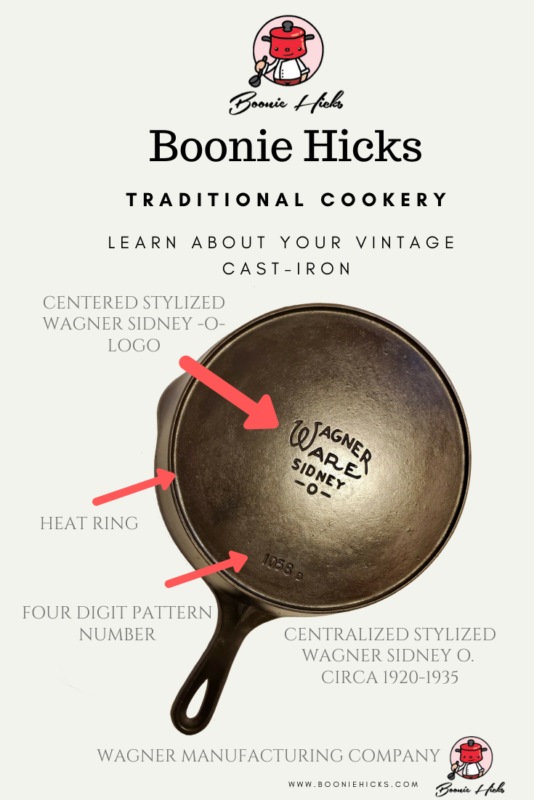
Pie Logo 1924-1934. However, Manufacturing Dates Are Uncertain.
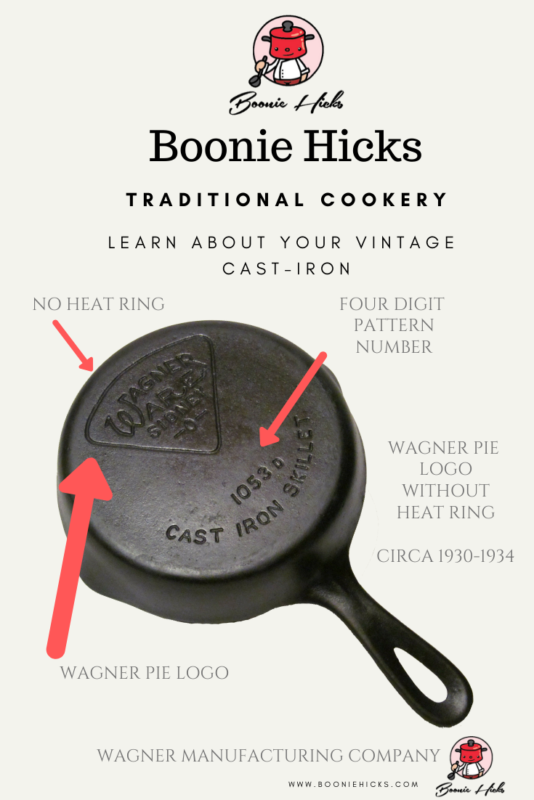
National Cast Iron Dates Between 1914 and 1940s
There are several different versions of cast iron with the National marking. Wanger marketed the Nation brand as entry-level cookware for budget-conscious consumers. Wagner made the National line circa 1914 to 1940.
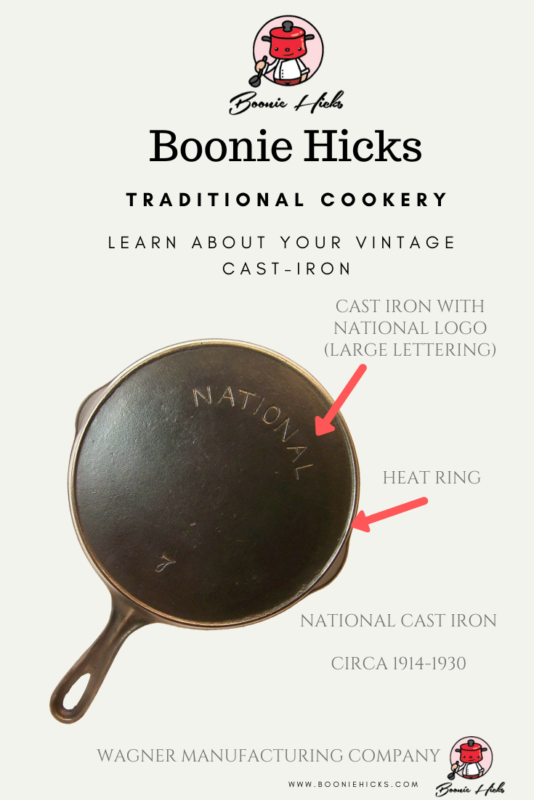
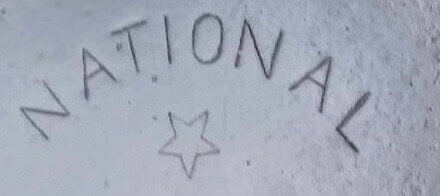
Long Life Logo 1930s.
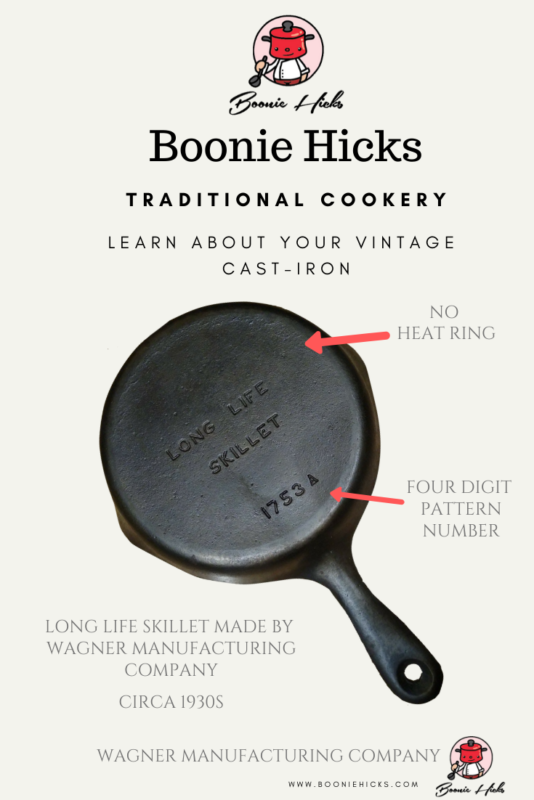
Wardway and Montgomery Ward. The Montgomery Ward Department store contracted Wagner Manufacturing Company to produce an in-store label. Circa the 1930s.
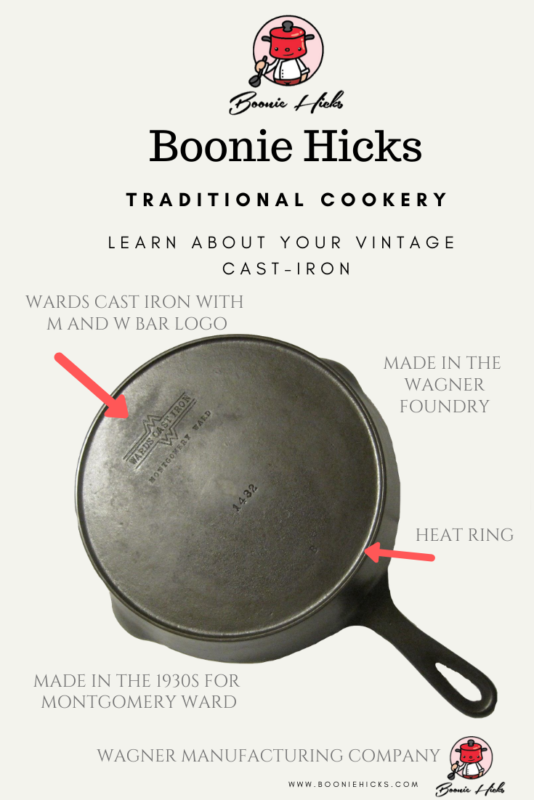
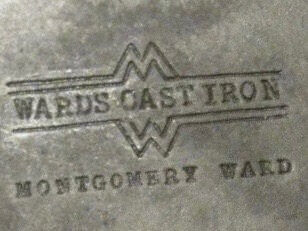
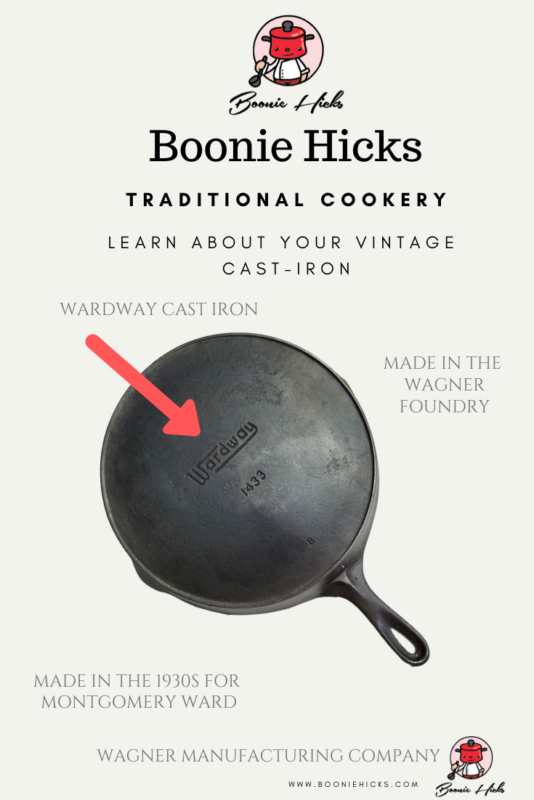
Final Thoughts On Wagner Cast Iron.
Fortunately, Wagner cast iron is more straightforward to date than other foundries of the time. Wagner Ware also has a huge collector base, so dates are well documented. The Cast Iron Collector is a valuable online resource for enthusiasts. Also, there are Facebook groups where you can share your love of cast iron cookware.
The Wagner Manufacturing Company was known for quality over quantity. Therefore, it has a good reputation for making trustworthy products.
Today, collectors and enthusiasts seek out Wagner cookware. However, you don’t need to be a collector to enjoy vintage cast iron. Here are six reasons why Wagner Ware is excellent ironware.
Although many cast iron enthusiasts look for Wagner-made skillets. But you’re not limited there. Wagner Manufactures a wide selection of cast iron cookware. You may find yourself becoming interested in:
- muffin pans
- Dutch ovens
- Scotch bowls
Since Wagner made some of the finest cast iron of the 19th and 20th centuries, Wagner ironware is still sought-after by cast-iron fans and hobbyists alike.

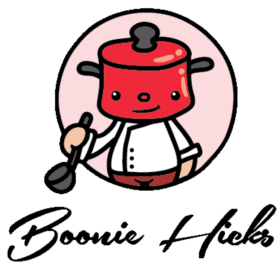
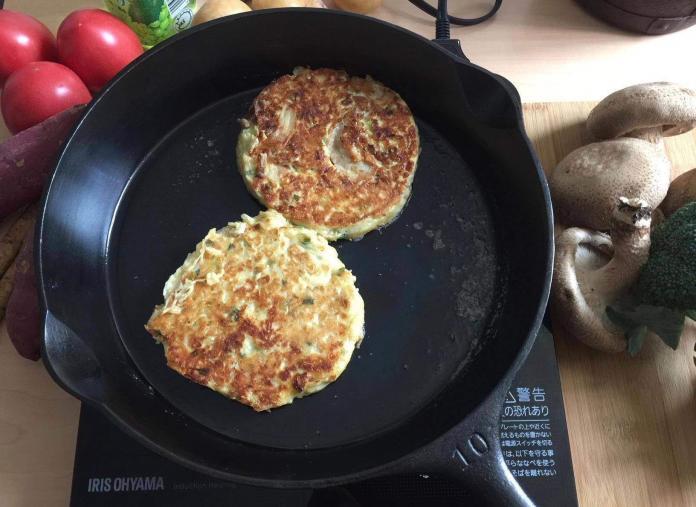
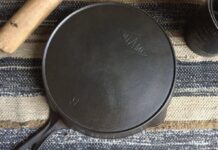
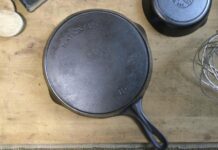
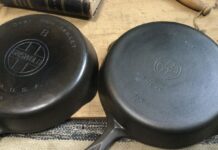



I now have a new cast iron obsession with the great detail information! I have a Wagner Ware Sidney small skillet #3. I am trying to determine if the wood handle that is bolted to the handle of the skillet was made by the former owner or if the company made these and sold. The wood handle is indicative of a lot of use in fire as there is some charring where the wood handle meets the skillet handle. Your feedback is appreciated.
Hi Lara
Thanks for getting in touch and I hope you’re enjoying your little Wagner Ware. Wagner produced ironware with wooden handles. However, I have not seen a Wagner with a bolted handle. I believe original handles were threaded so the handle could screw on and off. These handles usually have a ring on the end so you can hang and display your skillet in your kitchen.
Your suspicions could be correct and I wonder if a previous owner replaced the handle. Very cool.
Hope this answers your question
Cheers
Hi! My grandmother had a square Wagner skillet that has been lost and I have been searching for one like it. It looked like the 1101D bacon and eggs skillet but did not say bacon and eggs. I remember the logo was crooked and I think I remember her saying the separation in the pan was placed differently but I may be wrong. I saw one at an estate sale in Asheville NC which is where she lived but I wasn’t able to get it. Was this a predecessor to the 1101D or perhaps a flawed batch with the crooked logo?
Hi Anna
Thanks for getting in touch.
Unfortunately, I can’t point you in the right direction. Vintage Lodge breakfast skillets have two egg squares near the handle similar the Wagner made Wardward Breakfast Skillets but sadly I haven’t come across a breakfast skillet as your Grandmothers used. If you come across another Wagner with a crooked logo please take a few cheeky pictures I’d love to see it.
Cheers, have a good day
Hi , I just bought some cast iron pans and I’m trying to learn about them. 1 says Tite Top Dutch oven, Wagner Ware. In the middle it says Griswold in like a cross. Below it says made in made in USA. Pat”D Mar 16 20. Any help would be great. Thank you !
Hi Kathy thanks for getting in touch.
You mention you have purchased a couple of pans but I’m assuming you are describing a Dutch Oven with two logos.
If that is the case your pot was made sometime after 1960 and by the General Housewares Corporation. The company owned the rights of both Wagner and Griswold patents. It sounds like you have a circa 1970-1975 Wagner dual logo oven that came with original glass lid.
However, it’s not uncommon for the lids to chipped around the edges and on the handle. Sometimes previous owners decide to replace the lid with a replacement glass or cast iron lid.
Congratulations on your purchase. I hope you get a lot of enjoyment from it.
Hi Boonie,
I just bought a Wagner Ware 1287 Roaster Pan with no lid. How rare are these roasting pans? I’d like to find a lid for it, but these pans seem pretty rare. It has the rounded stylized logo. And is there a website that displays the different pans and approximate numbers of how many were made? Thanks, –Greg
Hi Greg
Thanks for the contact and it sounds like you’ve made a nice purchase.
These roasters are a little hard to come by and command healthy selling prices for ovens in good condition. It’s not uncommon for lids to go missing over the years and finding a pan without a cover is not surprising. However, collectors pay more for Wagner Oval Roasters with lids and a trivet. You might have some luck finding a number 7 lid on eBay. Look for a lid with the same wording thats on the base of your pan or a lid with 5 lines around the circumference of the lid. However, it might take a while for one to list as you’re just looking for the individual lid.
Cheers hope this helps.
My husband had his family’s 3 iron skillets and 1 round roaster stored in his mothers old hutch for 30+ years. I have reconditioned the 10 inch skillet, which was quite a feat. I gave it to one of our four grown children. I am ready to recondition the round roaster but I would like some feedback on it please. On the bottom it says:
WAGNER (in an arc)
WARE (straight
SIDNEY ( straight)
O
In the middle it say:
ROUND ROASTER
8
It does not have legs. And The top of the pan says, WAGNER (in an arc) above the handleI can barely read the rest but I think it says,
DRIP, and thats all I can read but it has 2 more words.So eager to find out as my husband has since passed at a very young age.
Thanks
Dear Shelly
Thank you ever so much for your contact. And I’m very I sorry to hear about your husband. However, I’m sure he is very pleased you are taking care of his mother’s ironware and researching his old Dutch Oven.
From your description, I believe you have a Wagner Drip Drop Baster. You didn’t mention a three digit pattern number so I suspect you husbands Vintage Wagner Ware was produced early to mid 1920s. And you’ll a few pattern dates around this time on underside of the lid. It is a great find and I’m sure you’ll get a lot of use from it once its cleaned up.
It sounds like a fantastic project you have ahead of you.
Hope this helps and have fun.
Trying to collate all this info to date a recent acquisition, which is clearly(?) an unmarked Wagner, 8-inch, smooth bottom cast iron pan, whose only distinguishing features are “8” on the top of the handle, and a small letter “B” on the bottom — nothing else I can see.
Help?
Hi R.D.
It’s nice to hear from you and it sounds like you’ve done some research.
You’re right it sounds like a Wagner. However, there were a few manufacturers during this time that made unmarked skillets as well. A single letter could be an indication of a Wagner. However, if you turnover your skillet and check the handle design. The point the handle meets the pan should be flat and triangular in shape. This is a strong indication of an unmarked Wagner Ware.
Cheers, hope this helps
I found a cast iron 12″ x 24″ griddle in my home, which was built in 1929. It has a straight Wagner name on the bottom, with Sidney below that and then O below that. At the bottom is the number 10. It has a raised “ring” all around the bottom edges.
I have been unable to find anything similar to this, let alone this particular size griddle. I would appreciate any thoughts you have on the age of this? Of course everyone wants to hear that their piece is old, rare and valuable!
Hello Rod
It’s nice to receive your question.
You’re very lucky to have an old character home and to have found a vintage piece of ironware.
Interestingly, The griddle might be older than your home. From your description, I think your long griddle was made between 1910-1920. And I guess the handles have reenforcement in the center for added strength.
It’s a large griddle, fingers crossed the griddle is level and is free from fire damage. To check current value type “Wagner long griddle” in eBay sold listings.The number 10 is less common so you might have to check back periodically.
Cheers Rod, hope this points you in the right direction.
Hi. I just found a Dutch oven that has Wagner ware Sidney O on the bottom. It also has the word Magnalite in script along with 4248B on the bottom. Can you tell me anything about this pot?
Thanks,
Patti
Hi Patti
Thanks for your question
Magnalite owners love their cookware. Just like cast-iron, Magnalite cookware was poured into a mold. Because of this, Magnalite is thick and surprisingly weighty. It is also hard wearing, Magnalite is extremely well-made cookware. The cookware is made of an aluminum alloy so it will conduct beautifully. If you are looking at buying the oven, please take into account the potential safely concerns with aluminum cookware.
Admittedly, I have to do further research but from your description, I believe your oven is made around the mid 1940s-1950s.
Cheers, I hope this helps
Hello!
I have found your site really helpful and informative, and I am grateful to have such knowledge so readily available. I am quickly becoming a cast iron lover, and I found a piece today I just can’t seem to identify!
I found an 8qt sized roaster/dutch oven/bean pot (not quite sure which!), complete with handle, Wagner Ware Sidney -o- Logo and smoke ring, making me believe it is from about 1924-1935, according to your wonderful resources. I am trying to figure out exactly what is is- it also has a descriptor on the bottom but I can’t quite make it out “MAS___N KETTLE” (the MAS is very clear, the N washed, and cant tell the letters in between) on the bottom. It is a big beautiful piece I would love some help identifying!
Any help? Much Appreciated!
Hello Gavin
Thanks for your question and I’m happy that you have found the resource useful.
Wow, what a great find. From your description I believe you have a Wagner Maslin Kettle. It’s also consistent with the size. Maslin kettles in my part of the world are commonly used for making jams. But large pots were used for all sorts of jobs that needed a large vessel. There are also some references that mention these kettles were used to boil milk. If that is the case, then there could also be a connection to cheese making.
Check the logo carefully for identification as you have done. Also your kettle might have a four digit pattern number. An 8 quart Wagner Ware Maslin Kettle with stylized logo may have the pattern number of 1198 on the base.
I hope this helps and enjoy your kettle.
Hi Brett,
Thank you for curating such a well-researched and informative site! Before today I knew NOTHING about cast iron cookware except that it was heavy!
My husband and I inherited a storage unit from his father, and it’s taken us more than a year to go through it. To say that the man was a “collector” is an understatement.
Today we hit the cast iron motherlode! We found about 25 pieces, almost all of it Wagner Ware. There are multiple sizes of skillets and pots (some with heat rings and some with smooth bottom), 3 different sizes of Dutch ovens, 2 muffin pans, what appears to be a deep-sided oblong baker, a square skillet, and a super cool small square divided skillet that has the words “bacon and egg breakfast skillet” stamped on the back. There’s also a No. 7 Drip Drop Roaster that appears to be nickel-plated, as it has a dull gold finish outside. The inside of the lid has a double sunburst pattern. Altogether it was exciting to find such an extensive collection, even though we had no idea what we were looking at!
The pieces are in good used condition, although many have a lot of deposits on the outside as they were used over open flames while camping. One skillet has a light, even coat of rust on the entire piece. We aren’t sure whether to attempt restoration on any of the pieces, as sometimes collectors appreciate the “patina”. Your thoughts or opinions would be appreciated.
To your knowledge, did Wagner make very large, deep stew pots? We have two different sizes that each have a very long handle on one side, and a vertical handle with a loop on the other. My husband has vague childhood memories of his father using one of these in their fireplace – the pot apparently hung from iron pegs within the firebox in order to cook stew.
We also found a couple of long-handled ladles that are more likely made of steel than cast iron, but they are incredibly heavy and could be made of coated cast iron.
I have pictures of the entire haul, and I’d be happy to share them with you. Please feel free to contact me if you are interested. I’ve learned so much from your site today and I appreciate all the work you’ve invested to make the images and information available to everyone.
Hi Kelly
Wow, thank you so much for getting in touch and sharing your story with us. I’m sure many of these pans will be rescued from storage and will take pride and place in your home. And your husbands father will be so happy.
You have some very interesting pieces and I’d love to take you up on your offer. Your kindness will undoubtedly make this resource better and will help many others identify their cast iron.
I’ll be in contact shortly and hopefully, I can help you with your ironware too.
Many thanks
I too, have a round roaster drip 7” with lid & double starburst but believe it’s just cast iron? My mom said it’s been around probably over a hundred years old?
Is she correct? I just made a blackberry cobbler in it! Worked great!
Hi Mary
Fantastic, you’re very lucky to have an old Wagner Roaster. These pots are highly sought-after. I’ve seen your other message with description, so I’ll see if I can estimate the age of your Wagner Ware.
Cheers,
I recently picked up a small iron skillet in a flea market that was marked with a Wagner logo on the bottom. It also included the instructions for how to season the skillet on the bottom right under the Wagner logo. Is this skillet an authentic piece of Wagner cast iron or is it some type of imitation? I can’t ever recall seeing seasoning instructions cast into the bottom of a frying pan. But maybe I’m not very familiar with all their trademarks.
Hi Paul
Thanks for your question.
You have a piece of ironware from the early 1990s. And was made by General Housewares Corp to celebrate 100 years of Wagner Ware. GHC owned to rights to the Wagner name and patterns however, you’re correct in your assumption that it’s not a piece of vintage cast iron. These pieces are not considered collectable however, I’m sure it will cook up a great breakfast for you and your family.
I recently bought (I believe) an older unmarked Wagner. It has a heat ring and measures to be a #7. It has no markings on the bottom. The only mark is a (0) on the bottom of the handle. The zero measures 1/4″ .
Any info will be appreciated.
Tom King
Hi Tom
It’s nice to hear from you.
I would also be inclined to think your pan is an unmarked Wagner, possibly from the 1930s. As you’ve noticed the letter on the back of the handle is an indication of Wagner. We also know Wagner made a number of unmarked skillets. It’s not certain but it looks like you’ve got yourself a nice unmarked Wagner.
Great spotting
Hi Boonie , I have a no 8 deep side skillet.1088 D trying to figure out from about yr on this .. I also have a smaller no 5 with a 1053 on it .. Hoping you can help me figure it out .. Love all the info ..
Hi Kim
Thanks for your question and I’m really happy you’re enjoying the info on the site.
Your smaller Wagner Ware 1053 I suspect is a very cute vintage size 3. If your pan has a stylized logo and a smooth bottom, your skillet was made around 1939 to 1957.
The Wagner deep skillet can be a little harder to identify without looking at the original lid. If your lucky enough to have the original lid check to see if there is any writing. A lid with raised lettering will place your deep skillet from 1920s-1930s. But if the lid is embellished with 5 circular lines it’s a 1940s era pan.
I really hope this points you injured the right direction.
Happy cooking.
I have a Wagner 8 that, judging from your article is circa 1935-1959. The number of top is nearly worn off but looks like 8 and it’s an 8″ skillet. All I can make out on the bottom is 10_ _ and what looks like a T. The thing is, it’s bright brass or maybe copper in color. It was restored using electrolysis. What’s with the copper/brass color?
Hi Greg
Thanks for getting in touch
Your question has me stumped. Wagner did work with brass but I suspect your skillet was originally plated with either nickel or chrome. Over the years this plating wears off but it can leave a vintage yellowish tone to the skillet. Interestingly, nickel and chromium are still used in the alloy to make modern stainless steel cookware.
Cheers Greg. Good on you for restoring these old vintage pieces.
Glad I found this site, I just discovered I have a Wagner Ware skillet and trying to figure out its year from the information here. On the bottom it has the stylized Wagner Ware logo, no heat ring, says 6 1/2 INCH SKILLET and MADE IN USA with a #3 on the topside of the handle. Thanks
Hi Darryl
Thanks for sending though your question.
Have a look at the logo on your skillet, you’ll noticed it’s missing the Sidney O lettering present on older pans. And because your skillet has Made In The USA, I believe your pan was made in the 1960s or possibly early 1970s before General Housewares Corp added their own logo to their cookware range.
Cheers Darryl hope this helps.
Hello.
I just pulled out of my barn a dirty, somewhat rusted, Wagner Ware Sidney -0- #1058 engraved on the bottom (#”8″ on the handle) and am endeavoring to restore it. I found a useful site for that but I notice the inside of the pan has areas of dark black that are patchy.
Is this merely something in the metal or might it be something else. I really want to use this pan but am concerned something in the metal might be breaking down. Can you advise?
Thank you! Gregg
Hello Gregg
Thank you very much for your contact.
It sounds like you had a successful day pottering around your barn. The mention of black patches on your Wagner doesn’t raise any alarm bells. Unless you think the skillet was painted with early paint.
But it sounds like the black patches on your skillet is simply old seasoning protecting your pan from rust. And I recommend removing all the old seasoning in your restoration project and apply your own for peace of mind. If you are worried about potential contamination from lead paint. You local hardware store should have 3M lead testing kits that are surprising cheap.
Have fun restoring your skillet. My advice as a collector is to stay away from power tools and keep your skillet original.
Hope this helps
Thank you so much for your sage advice.
I have an Aluminum Baster Sidney #265 that reads DRIR DROP BASTER (NOT DRIP DROP)…how many others have shown up like this? Any help would be appreciated
Hi Bev
Wow, it sounds like you have a very rare piece. The only information I could find is your oven might have been made in 1922.
Thanks for sharing. Hopefully another collector might be able to shed some more light on your vintage Wagner.
Enjoy your vintage cookware
Hello. Thank you for the interesting content! I have a few pieces from thrift stores that I use when camping and a #8 Wagner that I cook and bake in regularly. Could you help me date it? It is smooth bottomed, at 12 o’clock a stylized single W shared for Wagner Ware and Sidney -o- beneath. At 6 o’clock 1088A, and a small triangle shape on the underside where the handle joins the pan. A large 8 on the top of the handle and pour spouts on 3 & 9 o’clock. We use a lid for it that I’m sure wasn’t made to match: Wagner Ware Sidney -o- in the center at 12 o’clock, 1081A at the center 6 o’clock. It has 5 concentric rings on the top, close to the edge, and the edge has 2 lips that correspond nicely with my skillet pour spouts.
Hi Judy
Thanks for getting in touch and for your detailed description.
Your Wagner skillet with an accompanying lid sounds like it with a good find. Wagner manufacturing these skillets around 1935 to 1959. And as you can see on your skillet it was manufactured in the Sidney foundry. After 1959 you’ll see skillets without Sidney -o- when the new owner moved production.
Hope this helps and good on you for rescuing these old vintage pieces.
Hi Boonie,
My mother recently passed away. She had several cast iron skillets. The one I have has Wagner arched and Ware under it Sidney -0- 1059C It does not appear to have a heat ring around it. Unfortunatey there was not a lid. She had a glass dome lid that fit the one my sister chose. The skillet is heavily crusted on the bottom so I am not sure if it is a Wagner. If you are aware of where I might a glass dome lid to fit it, please let me know. I spent 2 hours researching and all I could find was modern lids.
Hi Ann
Thanks for getting in touch and I’m sorry to hear about your mum. However, I’m sure she’s very happy that you and your sister are treasuring her old skillets.
The no9 is a very useful size. Unfortunately, the original C series glass lids only came in three sizes and I don’t think any fit the number 9. Glass lids are mostly seen Dutch ovens and chicken fryers. My bet, is your sister chose a number 8 or 10 skillet to have an accompanying lid.
However, keep an eye out for a Wagner skillet cover 1069 which should fit your skillet. But please confirm with the seller first. Esty and eBay often have lids listed.
Cheers, hope this helps and welcome to the vintage cast-iron community.
Hello and thank you for having such a great, resourceful website. I just discovered a Wagner Ware Sidney -O- pan at my Mother’s house. It has the follow PAT. NOS. 97022-1554360, and 1402 on the bottom. Can you date this pan based on this information?
Hello Hedy
Thank you ever so much for your kind words. I’m really happy that you’ve enjoyed the resource.
It’s a wonderful find in your mothers kitchen. However, you might need to take look a second look. From your description you have a double skillet. Two skillets that interlocked, with the base being around 3 inches deep and the covering skillet just under 2 inches deep. Often the base is missing. My guess is the base was used frying and once it become too cruddy with buildup. It might have become a fire hazard or warped due to use on high temperatures.
Wagner made several variations of the double skillet but I believe you have a circa 1930s pan.
Your mothers pan has seen a lot of history
Cheers, hope this helps.